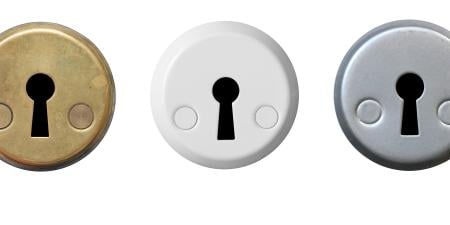Do you remember the last time you read an excellent physician note? If it was similar to any of the gems I've discovered, it was well organized and included the pertinent data from the encounter, all the while keeping the patient at the center of the dialogue. Good notes facilitate continuity of care, since many physicians gather background information in the electronic medical record (EMR) prior to meeting a new patient. In a busy emergency department, discharge summaries and problem lists impart the most information in a quick read; a physician preparing for the next day’s office visit benefits most from reading specialists’ recent notes. The best writing takes documentation to the next level—it reveals a doctor's compassion for the patient.
Much has been written about how to write good medical notes. The SOAP mnemonic (Subjective, Objective, Assessment, Plan) introduces students to the importance of providing information in the standard manner physicians are used to. While this general outline is necessary, following it does not guarantee that the note will be any good. SOAP only dictates an order of information, not content or style. The writing task’s transition from labored struggle (for students) to automatic function (for senior residents) is accompanied by improved readability. Ten admission notes in one overnight call? No problem!
Writing improves with practice. This is why the attending hospitalist efficiently enters numerous notes on one call while the new intern feels swamped by 3 admissions. Writing well also takes practice. To become an EMR wordsmith requires more than simple learned efficiency, a fact that is often neglected in medical education. A senior clinician once shared with me that, when it comes to the medical record, the best physician documentarians are great storytellers. For millennia, humans have told stories to make sense of the world around them. Tapping into that tradition will enrich physicians’ notes, and may even improve patient care.
Trainees’ notes can benefit from telling patients’ stories in places other than the medical record. One easy-to-start technique I’ve found helpful is keeping a log of every patient I encounter. This works really well in the emergency department, where I spend most of my time. It’s a bare-bones technique; every patient I see gets two or three lines in a pocket journal. The first line lists the patient’s initials, gender, date seen, and chief complaint or diagnosis. On the second line, I’ll note a learning point, any procedure I performed, and one other piece of the patient’s story. The more random the better—captured correctly, a strange component of the interaction can jog my memory of the entire encounter. For me, this record of pathology and molecular mechanisms is intermingled with memories of tears and laughter. Here are two examples from about 5,000 that I have accumulated since medical school:
JG061210 m AP Abscess
I&D “Pus Volcano”
AR090808 f Fever Cellulitis
US-guided IV in IVDU
Forgot to listen for murmur
Of the many patients I’ve seen in the past three years, these two are among the hundred cases I could present as though I just finished talking with the patient. How can you forget a patient reporting that his abdominal pain was relieved by a volcanic eruption of pus from his belly? I wish I could take credit for that metaphor. The second patient provided a sobering reminder of how medical training is full of mistakes and learning opportunities. The patient was an intravenous drug user (IVDU) with cellulitis, most likely incurred from dirty injection techniques. She needed antibiotics and surgical debridement of a deep abscess. After others on the team struggled to place a line, I inserted a tenuous ultrasound-guided IV. So proud was I of that procedure, that I neglected other elements of her care—including listening for a heart murmur. Shame on me if I haven’t listened for murmurs in every subsequent IVDU I’ve treated. The visual memory of that IV slipping out as she rolled to surgery cues a vivid recall of my mistake and reminds me of the peril of hubris.
So how is it that I remember these two patients as though I just walked out of their hospital rooms? Not only did I make a record of the encounters, but within a week or so, I wrote out a narrative skeleton of the experiences. I’ve done this for about 75 of my patients, or about two a month. If you want to try this, but have writer’s block, start with the history of present illness from your SOAP note. I liked the story of the mistake well enough that I polished it for public consumption and published it on a blog I wrote for at the time [1]. Granted, I heavily edited the story both to illustrate the point of the article and to completely obscure the patient’s identity. (Which, by the way, I have done here also.)
My opinion is that the emotion born of the patient-physician interaction is sometimes too rich to leave stranded in a logbook, or worse, in the dusty caverns of my memory. Taking the time to retell patients’ stories offers an opportunity to hone writing skills that will promote understanding of their problems, improve the clarity of future notes, and in some cases help teach someone else. People who learn by seeing and doing have the added benefit that the act of writing reinforces learning. Whether the account stays in a private journal, is disseminated via blog post, or gets published on paper, it still does the job of improving the writer’s ability to tell a story. The exercise of telling your patients’ stories in plain language will help others understand your writing, but also ground you in the narrative method that will be a boon to your medical documentation.
References
-
Robey T. Mistakes in medical school. The Differential. http://medscape.typepad.com/thedifferential/2008/07/mistakes-in-med.html. Accessed June 10, 2011.



